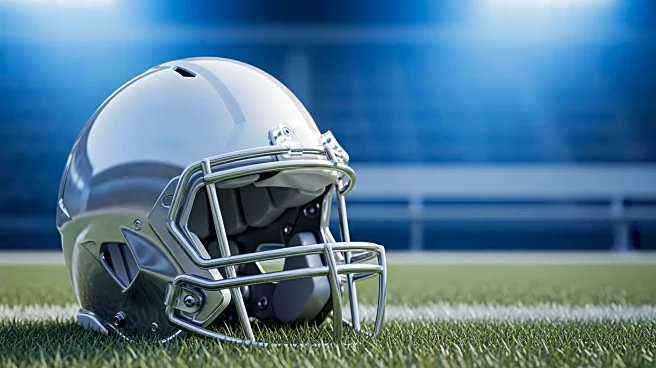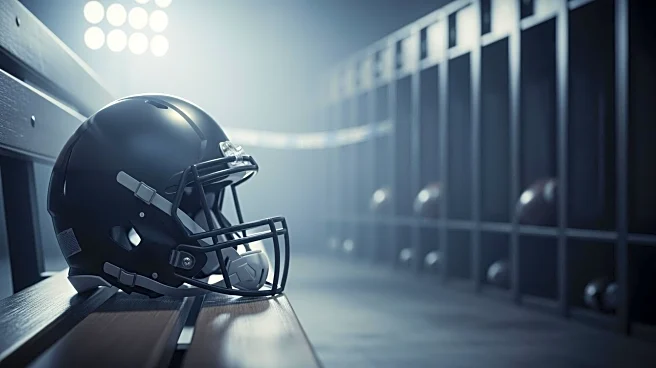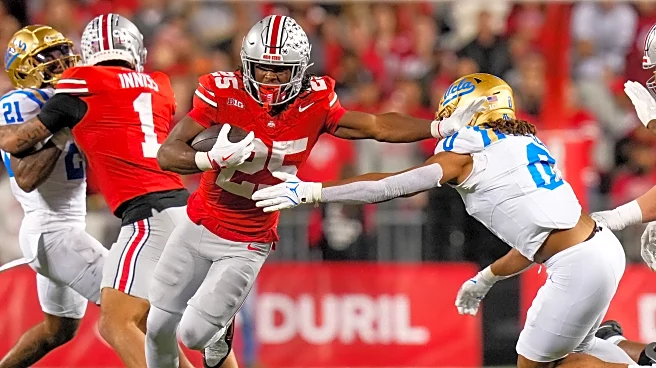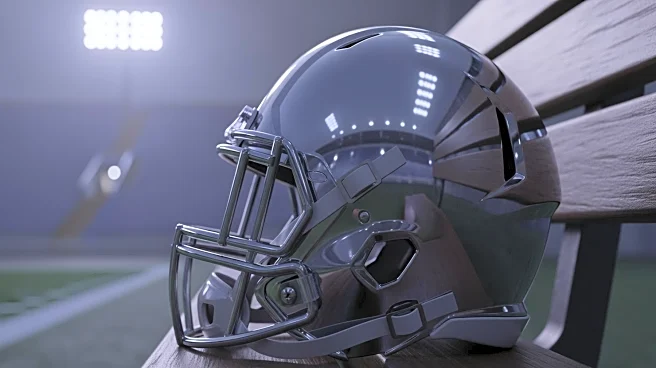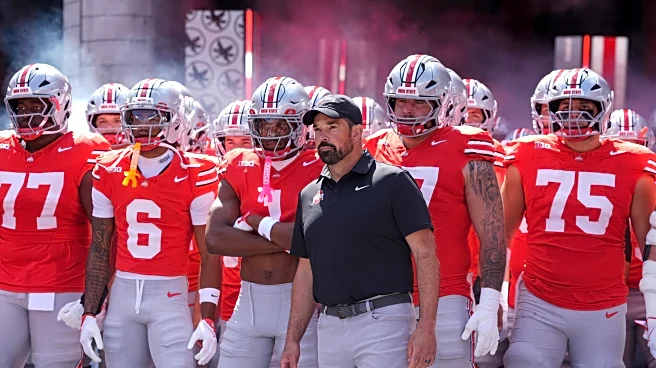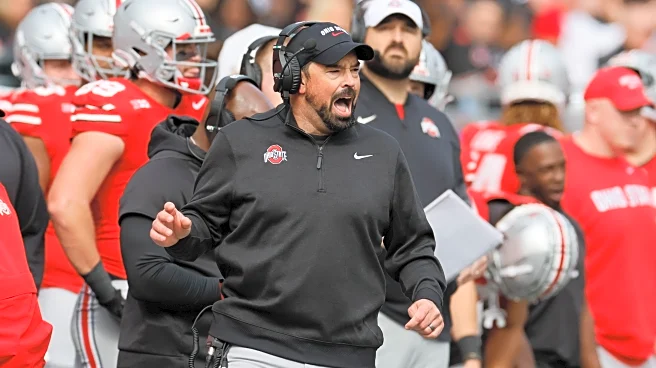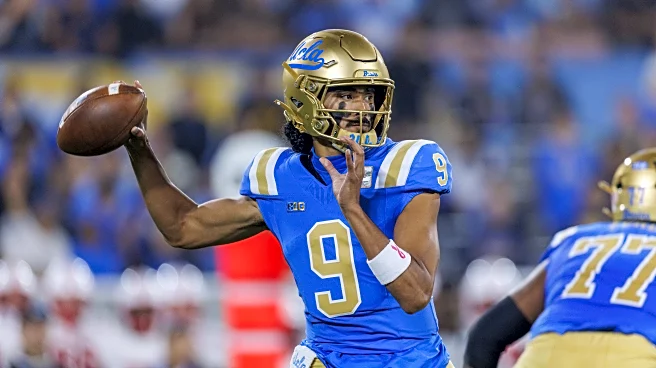What's Happening?
Jeremiah Smith, a standout wide receiver for Ohio State, was pulled from the game against UCLA at halftime due to injury concerns. Smith, who entered the game tagged as questionable, played the first half and contributed
with four catches for 40 yards, including a notable one-handed grab. Despite his performance, he was seen limping off the field at halftime and did not return for the second half. Ohio State's head coach, Ryan Day, indicated that the decision to sideline Smith was precautionary, citing a 'nagging issue' but expressed no long-term concerns about Smith's health. The Buckeyes, who are defending their national title, managed to secure a 48-10 victory over UCLA without Smith's participation in the latter half.
Why It's Important?
Jeremiah Smith's absence in the second half raises questions about Ohio State's depth in their wide receiver lineup, especially with Carnell Tate already ruled out. Smith and Tate have been pivotal to Ohio State's offensive strategy, combining for over 1,600 receiving yards this season. The team's ability to maintain their performance without these key players will be crucial as they aim for a return to the College Football Playoff. The situation highlights the importance of player health management in college football, particularly for teams in contention for national titles. Ohio State's handling of Smith's injury could influence their strategy in upcoming games and impact their playoff prospects.
What's Next?
Ohio State will need to assess Smith's condition and determine his availability for future games. With the College Football Playoff approaching, the team may need to rely more on other receivers like Brandon Inniss, Mylan Graham, and Bryson Rodgers to fill the gap left by Smith and Tate. The coaching staff will likely monitor Smith's recovery closely to ensure he is fit for critical upcoming matches. The team's ability to adapt to these changes will be tested as they continue their pursuit of another national championship.
Beyond the Headlines
The incident underscores the broader issue of athlete health and safety in college sports. Managing injuries effectively is crucial not only for the players' well-being but also for maintaining team performance. Ohio State's approach to Smith's injury may set a precedent for how other teams handle similar situations, balancing competitive goals with player health. This could lead to discussions on improving medical protocols and support systems for college athletes.
